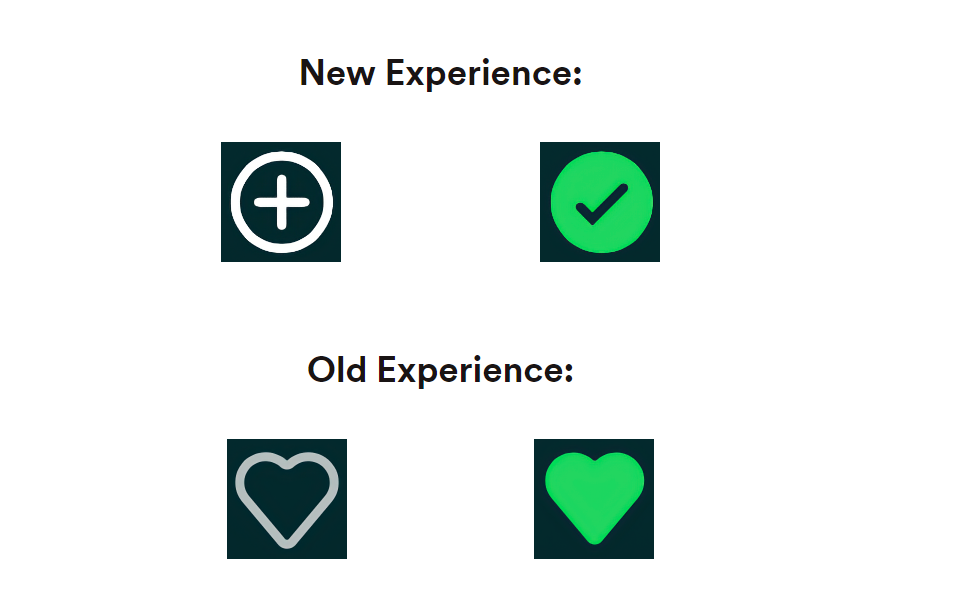Spotify’s iconic Fosbury Flop
In 1968 Olympics, athlete Dick Fosbury made a groundbreaking move. Instead of the traditional straddle technique, he jumped over the bar by leaping backward. Which later came to be known as ‘Fosbury flop’.
While practicing most time he struggled to perfect the straddle technique which was common and effective for high jumps at that time. Also, Fosbury sought solace in sports because of an emotional agony. Compiled emotions and struggle he challenged this familiar technique to create a more efficient move.
Somewhere, Fosbury believed high jump had no set rules, challenging the traditional approach. He broke the norm by leaping backward over the bar and became superb at it. Followed by his victory at the Olympics made him famous and proved that his technique was effective. Fosbury’s ability to rethink a familiar task made the “Fosbury flop” iconic.

One of such familiar tasks used every day is marking content a favorite. Whether it’s scribbling a star on a fridge photo or using a bookmark in a book. It’s a very physical and also digital action we do every day. Most apps use heart icon or start icon to do so. Which establishes the value of recognition and recall, a universal principle of design.
In recent time, Spotify, Fosbury flopped this task. By replacing heart icon to generic plus icon for adding songs or albums to favorite. This received a backlash from everyone alike. As it objects, the familiar task with an unfamiliar icon.
Here unfamiliarity of plus icon is because of its disassociation with marking something favorite. As it gets misinterpreted for adding content to something rather than marking it. However, the banner info clarifies that users are adding content to their favorite list. Then again, a heart icon represents a favorite list by heart icon. That makes normal users more confused as there is emotional disconnect.

No doubt, it is challenging to build a new icon that resonates with several marketplaces. That fulfils a need for easy grouping and sorting of the content. There are basic design challenges, such as metaphor, its usability to accommodation in different devices. The range is so vast that it is a difficult problem to solve. Although the plus icon solves all those for Spotify, it lacks one thing. That is excitement in users.
What if Spotify performed a metaphorical Fosbury flop?
By using a flower instead of the plus symbol, assume the change. In many cultures, flowers are used to bookmark or placed to mark as favorite. People recognize a bouquet as a bunch of flowers that convey an emotion. It associates with the value of personalization, which is the basic value proposition of marking content as a favorite. It’s assumed that this is an unconventional approach towards solving it.
Which has been part of music as industry. They’ve a rich history of embracing innovation. In the early 90s, music channels Fosbury Flopped traditional monochromatic logos, adapting them to telecast content or advertisements. This fundamental change added a layer of newness to the service, showcasing the music industry’s unique capacity for innovation.

This highlights an important lesson that creativity may not only arise from unexpected places but also by questioning the usual conventions. A fresh outlook to them may bring excitement in UX process.
